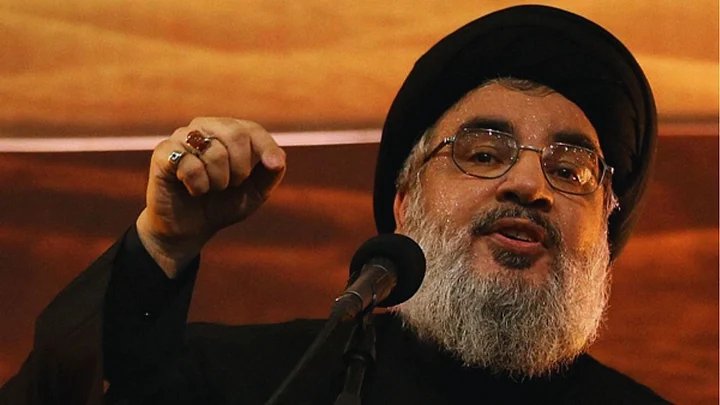There is little doubt that the Israeli strike on Friday that struck the central headquarters of Hezbollah in the Dahiyeh area of Lebanon's capital Beirut targeted its leader Hassan Nasrallah in his vast underground facility. The action also destroyed some six high-rise apartments.
The Israeli Defence Forces which conducted the strike have announced that he was killed in the attack. Hezbollah eventually confirmed it on Saturday afternoon.
Meanwhile, the Israelis say that their attacks will continue. Indeed, addressing the UN in New York on Friday, Prime Minister Netanyahu vowed that the campaign would not stop, thus putting paid to hopes of an internationally backed ceasefire.
Nasrallah’s death means that Israel has succeeded in killing one of its most formidable enemies, i.e., the person who was the most powerful figure in Lebanon and Iran’s closest ally in the region.
More than 700 people have been killed in the last 11 days since the fighting between Hezbollah and Israel escalated through a massive bombing campaign by the latter that has followed their pager bomb assault. Hezbollah declared war on Israel on 8 October last year, a day after the 7 October Hamas terror attack. It had, since then, kept up a campaign of rocket attacks against Israel.
Nasrallah Led Hezbollah for 32 Years
Nasrallah was just 32 years old when he assumed command of Hezbollah in 1992, a militant organisation of Shias created by the Iranian Revolutionary Guards Corps (IRGC). Maintaining a posture of constant hostility towards Israel, he extended the authority of Hezbollah across Lebanon.
In 2011-2012, Hezbollah entered the Syrian civil war on behalf of Bashar al-Assad, the embattled president of the country. It was also involved in Iraq in support of the Shia militias there, as well as in Yemen, where it fought alongside the Houthis against Saudi Arabia.
Massive Iranian assistance helped shape Hezbollah into a sophisticated military organisation armed with rockets, missiles, and drones. It evolved to become the largest non-state military force in the world.
Hezbollah earned a substantial reputation as tough and dedicated fighters and their performance was such that they literally compelled the Israelis to withdraw from its 18-year occupation of Southern Lebanon in 2000. In 2006, they slugged it out with Israeli forces in southern Lebanon again till a UN intervention obtained their withdrawal.
Leadership Vacuum
Given Nasrallah’s decades-long control of the organisation, Hezbollah will be hard put to replace him. The problem is compounded by the fact that in the past year that Hezbollah has been at war, it has lost a number of key leaders, all taken out by precise intelligence-driven strikes by Israel.
Mohammed Ali Ismail, the commander of the Hezbollah missile unit, was killed along with his associates on 28 September, a day after the Nasarallah hit.
Ali Karaki, the southern front commander was killed in the Friday strike along with Nasrallah. He had survived an Israeli assassination attempt days earlier.
Ibrahim Muhammad Qubaisi, who headed the missile and rocket division of Hezbollah was killed on 24 September in a strike in southern Beirut.
Ibrahim Aqil was also killed in September in a strike targeting a residential area in Beirut. He was part of its elite Radawan Force and had reportedly been involved in the April 1983 bombing of the US Marine barracks in Beirut.
Fuad Shukr was killed on 30 July in a strike in southern Beirut that demolished the building where he was located. Shukr was among the founders of the organisation’s military wing and a close adviser of Nasrallah.
This came hours before the assassination of Hamas' political leader Ismail Haniyeh in Tehran where he had gone to attend the inaugural of the newly elected president Masoud Pezeshkian.
Mohammed Nasser, responsible for operations in southwestern Lebanon, was also killed on 3 July.
Taleb Abdallah, a senior field commander, was killed on 12 June during a strike at a command centre in southern Lebanon.
A new leader would have to fill the very large shoes of Nasrallah and be acceptable to its internal factions as well as its key backer, Iran. The most likely successor being spoken of is Hashim Safi Al Din (also written as Safieddine) who oversees its political affairs and is also a member of the group’s Jihad Council. He happens to be a maternal cousin of Nasrallah and a Shia cleric like him.
In his clerical robes and turban, he bears a striking resemblance to Nasrallah. Incidentally, Nasrallah became head of the organisation in 1992 when his predecessor Abbas al Musawi was assassinated by the Israelis the same year.
All these deaths have disrupted the leadership structure within Hezbollah which was sent reeling when the pager bombs exploded, choking off what they believed was a secure means of communication.
It now has to navigate the challenges of keeping up the cohesion of the organisation in the face of mounting Israeli attacks. Hezbollah will not collapse with Nasrallah’s death, but there can be no doubt that it will have a serious impact on its activities.
(The writer is a Distinguished Fellow, Observer Research Foundation, New Delhi. This is an opinion article and the views expressed above are the author’s own. The Quint neither endorses nor is responsible for them.)
(At The Quint, we question everything. Play an active role in shaping our journalism by becoming a member today.)
